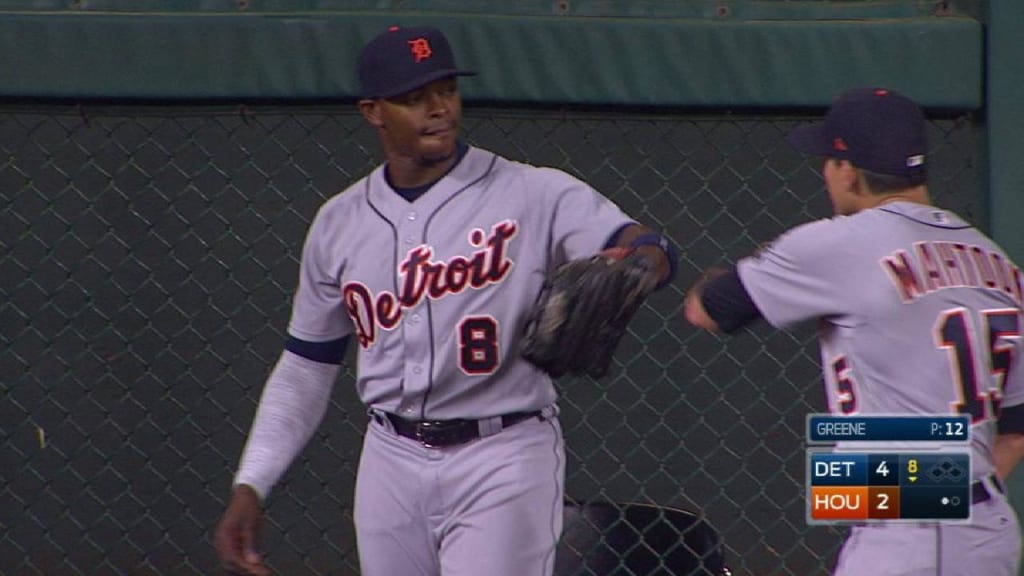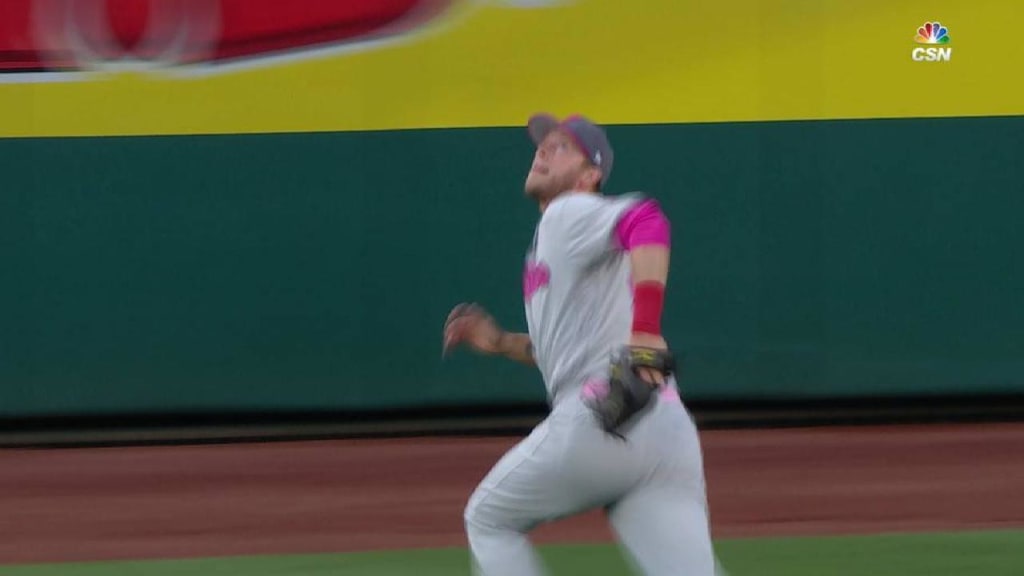Catch Probability updated to include direction
This browser does not support the video element.
When we introduced Catch Probability this spring, we tried to keep it simple, basing it on two inputs. The first was "how far did the outfielder need to go?" which measures his shortest possible line from start point to ball landing, and the second was "how much time did he have to get there?" from the pitcher's release to the ball landing. Distance and time are the building blocks of defense.
They still are, but as we said when we first put the metric out, the plan was to keep improving it, adding in adjustments to account for fielder direction, proximity to the wall and batted-ball spin. We've recently done the first step towards achieving all of that, incorporating fielding direction into Catch Probability based on the work of MLBAM's Tom Tango. Let's explain how it works.
In order to understand how much the metric needed to adjust for direction, first we had to figure out which directions actually affected outcomes. The assumption from talking to players was that going backward to make a catch would be more difficult than coming in or to the side by the same amount, but by how much? And how do you define "going back" anyway?
Since each fielder has a 360-degree range around them -- 0, for our purposes, is always "towards home plate" while 180 is always "straight back" -- we first broke that up in 72 five-degree sections. Then, we compared the expected Catch Probability based on distance and time against the real-world outcomes in each of the directions. Most showed little or no difference at all, but going backwards did. We eventually simplified that into six 60-degree segments, with the two defined as "going back" being plus or minus 30 degrees around the 180 degree line.
Based on that, it became clear that only going back actually required an adjustment, since no other direction showed a real difference in actual versus expected outcomes. But how much? We wanted to make sure that the conversion rate on plays going back could still be consistently applied against other directions, but of course we still needed to give the fielder going back credit for what are tougher conditions. It's not an easy balance.
So we compared the conversion rate for plays going back to all other plays, and found that the difference was approximately one foot per second of speed. That is, players going back were one foot per second slower than they were going elsewhere, which makes sense, given that it's difficult to run full speed while turning your head around to track the ball. On a batted ball with a hang time of five seconds, you can see how much one foot per second matters.
In order to account for that, for plays where the outfielder is going back, we adjust the data by the gap of one foot per second. Another way to think about that is that an elite Five-Star play usually requires a Sprint Speed of 30 to 32 feet per second, yet for going back, we found that the range for such great plays was actually 29 feet to 31 feet -- hence the difference of one foot per second.
This is all a very long way of saying "It's harder to go back because you can't run as fast, so we'll account for that when you do so that you're still on the same scale rather than being put as a disadvantage." It's really difficult to make a play going backwards. We ought to be fair in crediting those players who do.
So how many plays are affected, and by how much? Fewer, actually, than you might think. From Opening Day through Wednesday's games, just over 300 catches have been made that qualified as "going back." The majority of those plays (82 percent) saw their Catch Probability change by five points or less. That is, when Randal Grichuk made a relatively easy catch of a Stephen Drew sac fly on April 10, the original 95 percent Catch Probability dropped only to 91 percent. It was harder because he went back, but it was still easy overall.
A handful more (16 percent) saw larger changes, from between six and 20 points. Remember, these are all getting more impressive for the fielder, no one saw a hard play get easier. So when Michael Saunders made this nice running catch on May 14, what would have previously been an 81 percent Catch Probability play dropped to 63 percent, a Three-Star play. It was more difficult because of the direction he ran.
This browser does not support the video element.
Finally, eight plays (just under three percent) had their Catch Probability change by 21 to 30 percentage points, which is actually a sizable margin. Aaron Judge's great diving catch at Tropicana Field last week would have been a 55 percent Catch Probability play before the direction adjustment was made, a very good Three-Star play. With the adjustment, that came down to 26 percent, a Four-Star play that's close to a Five-Star play.
This browser does not support the video element.
Yasiel Puig had nearly the same experience when he bowled over Joc Pederson recently, turning a 46 percent play into an 18 percent play.
This browser does not support the video element.
Most plays, however, are unaffected. Most of the ones that were saw relatively minor changes; after all, an easy play is still easy even if you're going back. Going forward, all Catch Probability numbers you see reported will include this adjustment, and the Catch Probability leaderboards will very soon be updated to reflect this change back to 2015. And, of course, we'll keep working to keep improving the metric.

